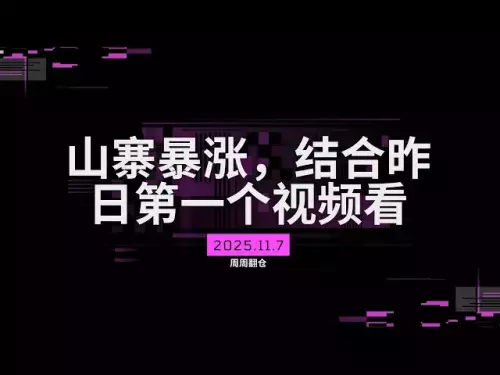-
 bitcoin
bitcoin $102877.190955 USD
1.88% -
 ethereum
ethereum $3430.435064 USD
4.52% -
 tether
tether $0.999264 USD
-0.05% -
 xrp
xrp $2.307310 USD
4.49% -
 bnb
bnb $987.740692 USD
3.82% -
 solana
solana $161.947760 USD
3.97% -
 usd-coin
usd-coin $0.999712 USD
-0.05% -
 tron
tron $0.292810 USD
2.93% -
 dogecoin
dogecoin $0.179738 USD
10.70% -
 cardano
cardano $0.580716 USD
8.75% -
 hyperliquid
hyperliquid $42.463448 USD
8.40% -
 chainlink
chainlink $15.763437 USD
7.05% -
 zcash
zcash $649.595636 USD
17.21% -
 bitcoin-cash
bitcoin-cash $511.610261 USD
7.19% -
 stellar
stellar $0.292537 USD
7.91%
How to use TRIX and its signal line
The Triple Exponential Average (TRIX) is a momentum oscillator that identifies trend reversals and filters market noise through triple smoothing of exponential moving averages.
Jul 18, 2025 at 09:00 pm
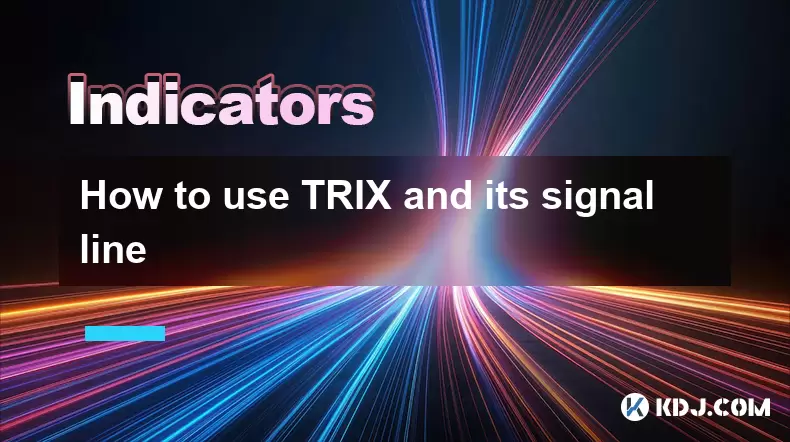
Understanding the Basics of TRIX
TRIX (Triple Exponential Average) is a momentum oscillator used in technical analysis to identify oversold and overbought markets, as well as potential trend reversals. It is derived by calculating the rate of change of a triple exponentially smoothed moving average, which helps eliminate insignificant price movements and filter out market noise.
The formula for computing TRIX involves several steps:
- Calculate the first exponential moving average (EMA) of the closing prices over a specified period (usually 14 or 15 days).
- Compute the second EMA of the first EMA.
- Calculate the third EMA of the second EMA.
- Finally, determine the percentage difference between the current and previous value of the third EMA to obtain the TRIX line.
This multi-step smoothing process ensures that TRIX reacts more slowly to price changes, making it ideal for identifying long-term trends rather than short-term fluctuations.
What Is the Signal Line in TRIX?
In addition to the TRIX line, traders often use a signal line, which is typically a 9-period EMA of the TRIX values. This signal line acts as a trigger for buy and sell signals when it crosses above or below the TRIX line.
To calculate the signal line:
- Take the TRIX values generated from the previous step.
- Apply a 9-period exponential moving average to these values.
- Plot this new line alongside the TRIX line on the same chart.
The interaction between the TRIX line and its signal line forms the basis for generating trading signals. The signal line serves to confirm the momentum behind the TRIX crossovers, helping reduce false signals caused by sudden price spikes or volatility.
How to Interpret TRIX Crossovers with the Signal Line
One of the most common ways to use TRIX is through crossover signals between the TRIX line and its signal line. These crossovers can indicate potential shifts in market sentiment.
When the TRIX line crosses above the signal line, it suggests increasing positive momentum and may be interpreted as a buy signal. Conversely, when the TRIX line crosses below the signal line, it indicates growing negative momentum and could serve as a sell signal.
It’s important to note that these signals are more reliable when they occur near the zero line. A crossover above zero after a downtrend might confirm a stronger bullish move, while a crossover below zero during an uptrend could suggest a bearish reversal.
Traders should also look for divergences between the TRIX indicator and price action. For instance, if the price makes a new high but the TRIX does not, it may signal weakening momentum and an impending reversal.
Setting Up TRIX and Its Signal Line on Trading Platforms
Most modern trading platforms like TradingView, MetaTrader, and Binance's native tools allow users to add TRIX and its signal line directly to their charts. Here’s how you can set them up:
- Open your preferred trading platform and navigate to the indicator section.
- Search for “TRIX” or “Triple Exponential Moving Average.”
- Adjust the period setting—the default is usually 14 or 15, but you can customize it based on your trading strategy.
- Enable the signal line option, which is generally pre-configured as a 9-period EMA.
- Apply the settings and observe how the TRIX and signal line interact with price movements.
Some platforms allow further customization such as changing colors, thickness, and even sound alerts for crossovers. Traders can also overlay other indicators like RSI or MACD for confirmation, though caution should be exercised to avoid overloading the chart with redundant information.
Practical Examples of TRIX and Signal Line in Crypto Trading
Let’s consider a practical example using Bitcoin (BTC/USDT) on a 4-hour chart:
During a consolidation phase, the TRIX line hovers around the zero line. Suddenly, the price starts rising, and the TRIX line crosses above the signal line, indicating a possible uptrend. At this point, a trader might enter a long position.
Later, as the price peaks and begins to decline, the TRIX line crosses below the signal line, suggesting a shift in momentum. This could prompt a trader to close the long position or even consider a short trade.
Another scenario occurs when the price continues to rise, but the TRIX line fails to reach a new high. This bearish divergence warns of weakening momentum, potentially signaling a reversal before it becomes evident in price.
These examples demonstrate how combining TRIX with its signal line can provide actionable insights into cryptocurrency price behavior, especially in volatile markets where timely decisions are crucial.
Frequently Asked Questions
Q: Can TRIX be used effectively on all timeframes?A: Yes, TRIX can be applied across various timeframes including 1-hour, 4-hour, daily, and weekly charts. However, longer timeframes tend to produce fewer false signals and are better suited for confirming strong trends.
Q: What are the best settings for TRIX in crypto trading?A: While the default settings of 14 or 15 periods for TRIX and 9 for the signal line are commonly used, optimal parameters can vary depending on the asset and market conditions. Some traders experiment with shorter periods (e.g., 12) for faster signals or longer ones (e.g., 20) for smoother readings.
Q: How does TRIX differ from MACD?A: Both TRIX and MACD use signal lines and crossovers, but TRIX focuses on triple smoothing of EMAs, making it less reactive to minor price swings. MACD, on the other hand, uses the difference between two EMAs and tends to generate more frequent signals.
Q: Is TRIX suitable for scalping strategies?A: Due to its smoothing mechanism, TRIX is generally more effective for swing trading rather than scalping. Scalpers often prefer faster-reacting oscillators like RSI or Stochastic to capture quick moves within tight ranges.
Disclaimer:info@kdj.com
The information provided is not trading advice. kdj.com does not assume any responsibility for any investments made based on the information provided in this article. Cryptocurrencies are highly volatile and it is highly recommended that you invest with caution after thorough research!
If you believe that the content used on this website infringes your copyright, please contact us immediately (info@kdj.com) and we will delete it promptly.
- Ripple (XRP) in 2026: Hold or Fold? A Look at XRP's Future and Emerging DeFi Alternatives
- 2025-11-08 18:35:01
- Zcash ZEC Coin Price Explosion: From Privacy Niche to Center Stage
- 2025-11-08 18:55:01
- Berachain Price Prediction: Navigating the Honeycomb Hype in Crypto
- 2025-11-08 18:55:01
- Arthur Hayes, Gold, and Bitcoin: A Modern Monetary Trinity?
- 2025-11-08 19:15:01
- Shiba Inu's Next Move: Navigating a Shifting Market
- 2025-11-08 19:20:01
- Pakistan's Crypto Crossroads: Balancing Opportunity with Asset-Backed Realities
- 2025-11-08 19:20:01
Related knowledge
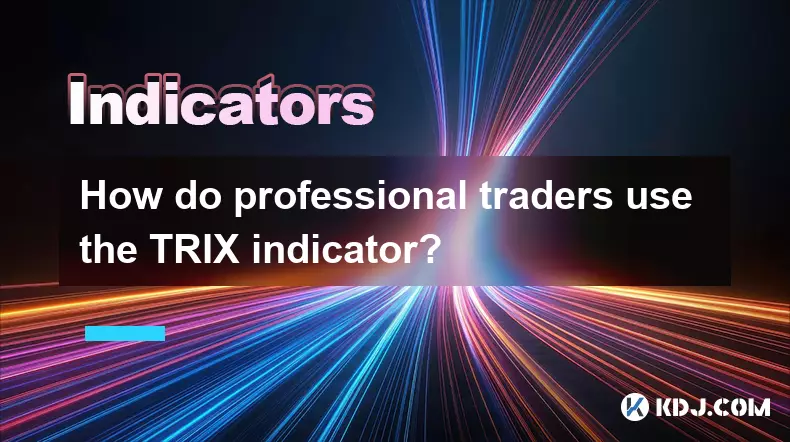
How do professional traders use the TRIX indicator?
Nov 06,2025 at 04:40pm
Understanding the TRIX Indicator in Crypto TradingThe TRIX (Triple Exponential Average) indicator is a momentum oscillator used by professional trader...
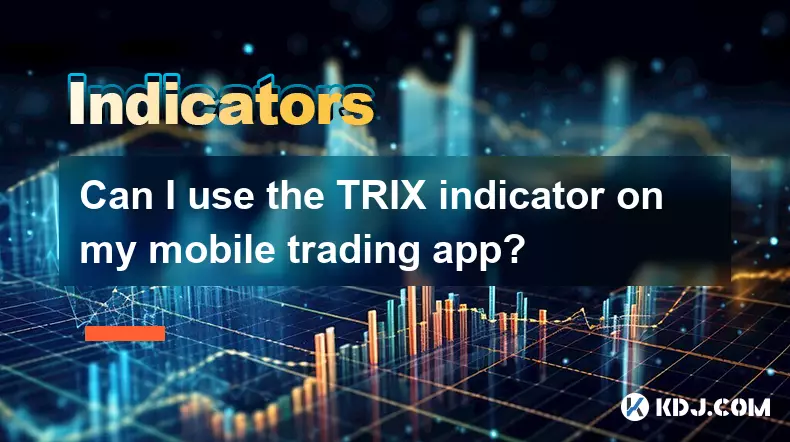
Can I use the TRIX indicator on my mobile trading app?
Nov 07,2025 at 07:40pm
The TRIX indicator, a momentum oscillator designed to filter out short-term fluctuations and highlight long-term trends, has become increasingly popul...
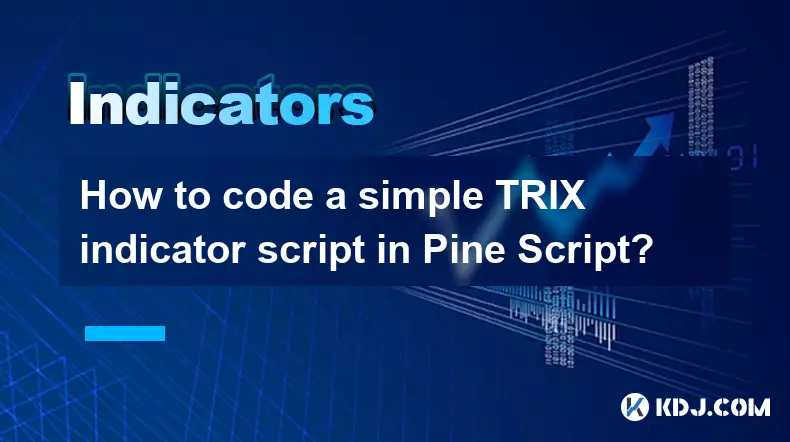
How to code a simple TRIX indicator script in Pine Script?
Nov 07,2025 at 06:20am
How to Code a Simple TRIX Indicator in Pine Script The TRIX (Triple Exponential Moving Average) indicator is widely used in cryptocurrency trading to ...
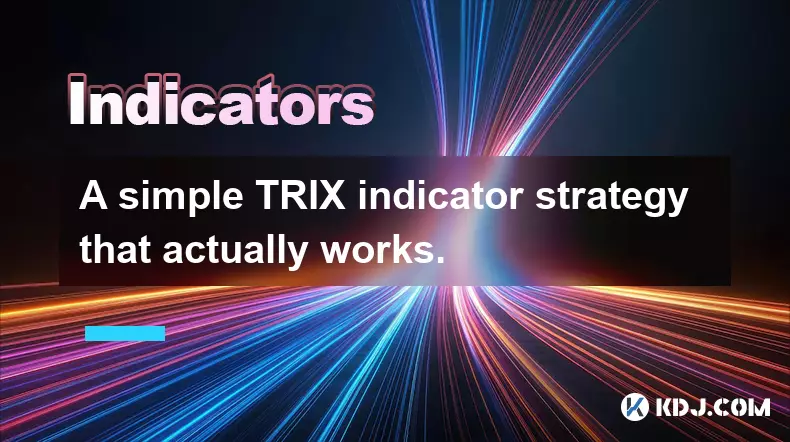
A simple TRIX indicator strategy that actually works.
Nov 08,2025 at 05:39pm
Understanding the TRIX Indicator in Crypto Trading1. The TRIX (Triple Exponential Average) indicator is a momentum oscillator designed to filter out s...
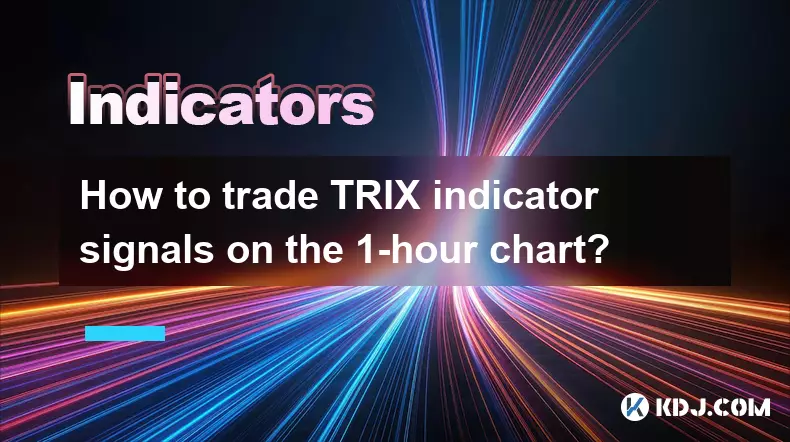
How to trade TRIX indicator signals on the 1-hour chart?
Nov 07,2025 at 05:39am
Bitcoin's Role in Decentralized Finance1. Bitcoin remains the cornerstone of decentralized finance, serving as a benchmark for value and security acro...
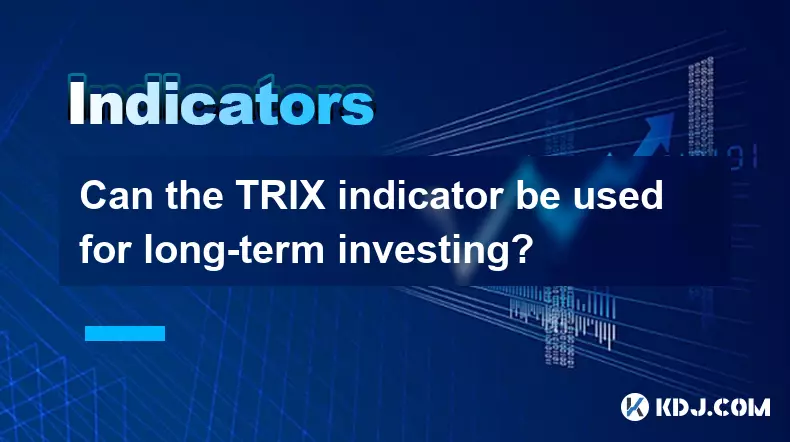
Can the TRIX indicator be used for long-term investing?
Nov 06,2025 at 02:19pm
Understanding the TRIX Indicator in Cryptocurrency Markets1. The TRIX (Triple Exponential Average) indicator is a momentum oscillator designed to filt...

How do professional traders use the TRIX indicator?
Nov 06,2025 at 04:40pm
Understanding the TRIX Indicator in Crypto TradingThe TRIX (Triple Exponential Average) indicator is a momentum oscillator used by professional trader...

Can I use the TRIX indicator on my mobile trading app?
Nov 07,2025 at 07:40pm
The TRIX indicator, a momentum oscillator designed to filter out short-term fluctuations and highlight long-term trends, has become increasingly popul...

How to code a simple TRIX indicator script in Pine Script?
Nov 07,2025 at 06:20am
How to Code a Simple TRIX Indicator in Pine Script The TRIX (Triple Exponential Moving Average) indicator is widely used in cryptocurrency trading to ...

A simple TRIX indicator strategy that actually works.
Nov 08,2025 at 05:39pm
Understanding the TRIX Indicator in Crypto Trading1. The TRIX (Triple Exponential Average) indicator is a momentum oscillator designed to filter out s...

How to trade TRIX indicator signals on the 1-hour chart?
Nov 07,2025 at 05:39am
Bitcoin's Role in Decentralized Finance1. Bitcoin remains the cornerstone of decentralized finance, serving as a benchmark for value and security acro...

Can the TRIX indicator be used for long-term investing?
Nov 06,2025 at 02:19pm
Understanding the TRIX Indicator in Cryptocurrency Markets1. The TRIX (Triple Exponential Average) indicator is a momentum oscillator designed to filt...
See all articles





















![The Graph Price Prediction [GRT Crypto Price News Today] The Graph Price Prediction [GRT Crypto Price News Today]](/uploads/2025/11/07/cryptocurrencies-news/videos/690d4df44fe69_image_500_375.webp)



